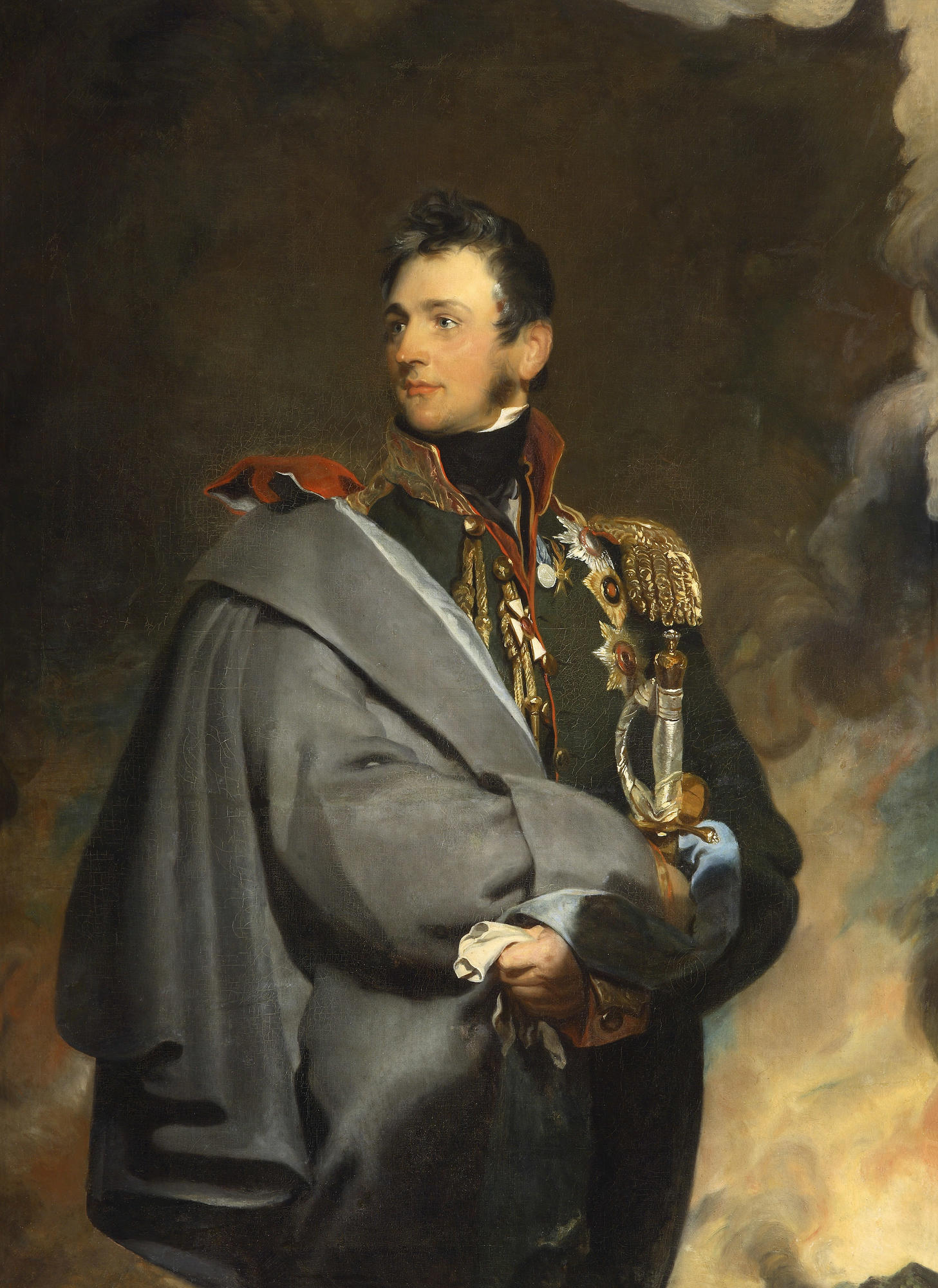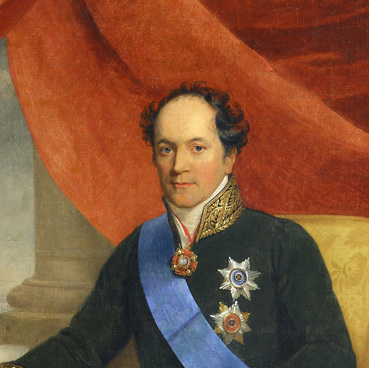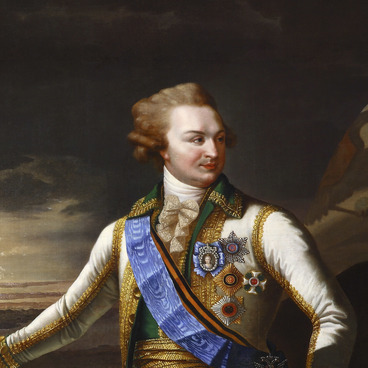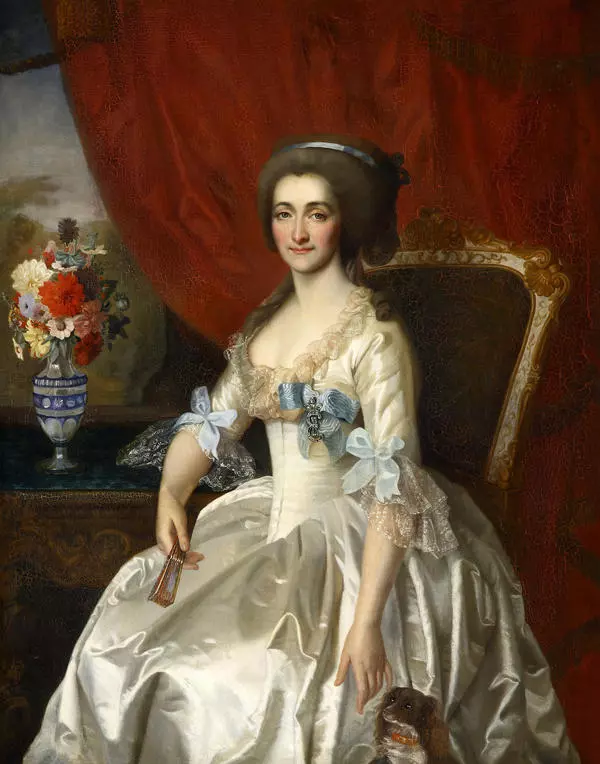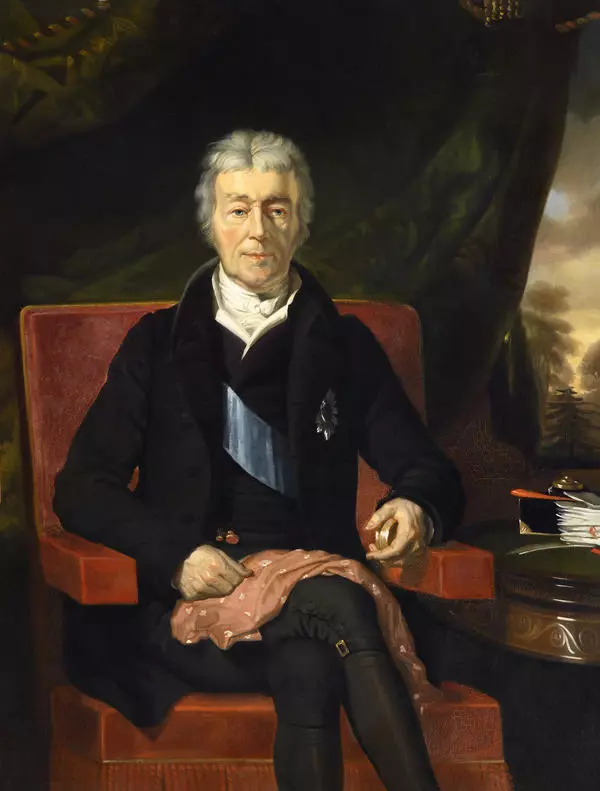A shoulder length portrait of Vorontsov was copied by artist Louise Desseme in 1848 from a portrait by Thomas Lawrence, 1821. A copy of Desseme, quite worth of the original, was painted especially for the portrait gallery of the Vorontsovsky Palace.
Vorontsov is depicted as a combat general in a uniform with a shoulder knot and military awards: the Medal ‘In Memory of the Patriotic War of 1812,’ the star and St. George order of the 2nd class, stars of St. Alexander Nevsky and Vladimir of the 1st degree orders. A sharp, energetic turn of the head, a confident gesture of the hand clutching the glove, convey confidence and internal strength. Close-cropped black hair seasoned with grey is fluffed at the front and combed to the temples.
The right side of the figure is closed by the uniform jacket with pelerine. There’s a gold sword in his right hand. The background of the portrait — clouds of white and black smoke with yellow-pink flame — reminds about the past of Vorontsov as well as the awards in the glorious fighting.
Count Mikhail Semenovich Vorontsov (1782 — 1856) was born in St. Petersburg. His biography is full of military victories. He was enrolled in the Life guard as a bomber-corporal of the Preobrazhenskiy Regiment, at the age of 4 he was already promoted to a warrant officer.
In 1798, by a decree of Emperor Paul I, Mikhail Semenovich was awarded the title of chamberlain. This is how his service to the Fatherland began.
In 1803, Vorontsov left duty at the court to volunteer to Transcaucasia. Having arrived on the site, he actively participated in fights, was always on the front line and received the first awards: Orders of George, Vladimir and Anna.
In 1805-1807 Vorontsov participated in military campaigns against Napoleon. During the Patriotic War of 1812, at the Battle of Borodino, the Grenadan Division of Vorontsov suffered heavy casualties, but did not back down. Mikhail Semenovich himself was wounded. Recovering, Vorontsov continued to participate in military campaigns oversees and played one of the leading parts in the capture of Paris in March 1814. He commanded a separate occupational corps of allied troops in France.
On May 7, 1823 Alexander I signed a decree appointing Vorontsov to the position of Governor-General of Novorossiysk Region and Empowered Governor of the Bessarabian Region. The Earl’s quarter was Odessa.
Maria-Louise-Erminia Desseme was born in 1815 in the French city of Saint-Denis. Her father Jacques Desseme was a well-known botanical gardener, creator of boulevard and parks in Odessa, and a director of the Odessa Botanical Garden.
There is very little information concerning Louise Desseme 's life. The only document where she is called an artist is the admission to Vorontsov’s gallery for making copies, which is written for “the young beginning artists Louise Dessema and B. Pharmakovsky”. It is likely that the orders of the Vorontsov family entirely filled her day and did not leave time for her own work.
